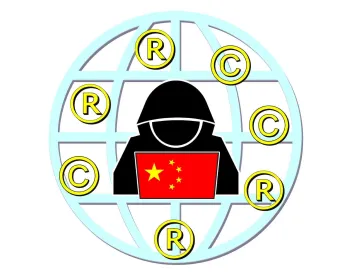Is this the time we can really see a change in the fight against Chinese trademark squatters, or are we just adding burdens to legitimate right holders?
The China National Intellectual Property Association (CNIPA) has recently published a draft amendment to the Chinese Trademark Law. The document is still under examination and has been disclosed to the public for comments. If adopted in its current version and without further modifications, this amendment would have a considerable impact on many aspects of trademark law and practice in China. One of those aspects is the never-ending fight against trademark squatters.
Trademark squatters are Chinese individuals or companies that hoard the trademarks of others without their consent. Relying on the online database of the Chinese IPO (online since 2005) and the first-to-file principle where prior use does not grant trademark rights in China and the first-to-file wins the right, they have built a huge industry based on theft and blackmail. Various attempts have been made in the past versions of the Chinese Trademark law to reduce the impact of this phenomenon. Among them are: the recognition of trademark hoarding as a ground for invalidation, the non-use of the stolen mark as a defense against possible trolling, the increase of recognition of bad faith in opposition proceedings, just to name the most relevant. However, none of them was able to reduce the level of squatted filings.
Now, with this amendment, the CNIPA seems to take a closer aim at trademark squatting by introducing revolutionary legal concepts in the trademark filing and maintenance process, such as actual or imminent use at the time of filing an application and proof of use to maintain a registration.
Proof of actual or imminent use at the time of filing a trademark application
The first drafted measure concerns the introduction of the principle that a trademark must be filed only for a product in actual or imminent use. Draft article 5 provides that the applicant must file a trademark only if the mark is in actual use or it will be used within a certain amount of time.
Although the draft provision does not expressly set forth an obligation for the applicant to file evidence of use, or a promise to use within a reasonable period at the time of filing his/her application, such obligation should be a direct and logic consequence of the amendment. As it is typical in China, the concrete implementation of the draft article 5 amendment should be further defined in the Implementing Regulations that are normally issued together or soon after the adoption of the Trademark Law Amendment. We will therefore need to wait a bit longer to see if this provision will be approved and how it will be implemented.
Nonetheless, this drafted measure is a clear sign that CNIPA understands that tougher measures are required against squatters. Squatting not only damages right holders but it damages also CNIP and its examination structure. Examiners are overwhelmed by oppositions and invalidations against squatted mark. All these procedures absorb resources and time that the CNIPA would rather allocate to more profitable activities. A successful implementation of this new provision could reduce the number of oppositions and invalidations by rejecting squatted applications for lack of actual use.
What if the squatter just files a promise of use and gets the mark registered, nonetheless?
Promise of Use
Draft Article 61 has taken such risk into consideration. This article provides that the trademark registrant must provide a statement of use of the trademark, or a justifiable reason for the non-use of the trademark within 12 months after every 5 years from the date of grant of the trademark. If the registrant fails to provide such statements, it will be given an additional 6 months to comply. If it fails to do so within this additional grace period, the mark will be invalidated.
The question remains whether and how the CNIPA will check the authenticity of such statements. It is possible that the Implementing Regulations will give CNIPA the power to conduct random checks, however, squatters know that due to the sheer numbers of squatted applications every year it will be almost impossible for CNIPA to conduct meaningful controls.
In the end right holders will be forced to file these non-use cancellations that we were hoping to prevent and spare through such an amendment.
Added burden for the applicants in good faith?
If the intent of curbing squatters by introducing new application formalities is commendable, the chances of these new provisions to curb and reduce squatted applications and registrations remains uncertain.
Certain instead appears the burden for legitimate and good faith applicants and right holders. They will need to secure all the needed use evidence and make sure to file it when required, both at the time of application and then every five years after registration. New use evidence retention policies will have to be adopted. Special evidence packages for multiple filings in the same class/product will have to be prepared and streamlined to avoid the risk of missing deadlines and risking cancellations following random CNIPA checks.
In sum, the reality is that squatters and legitimate right holders play by different moral and business rules. While trademark thieves can still try to go around such new provisions and try their luck, legitimate right holders must simply comply with them. In the end, it seems that the balance of such amendments will still favor the squatters. However, we await the final version of such provisions and their Implementing Regulations to draw a final and reliable conclusion.




 />i
/>i

